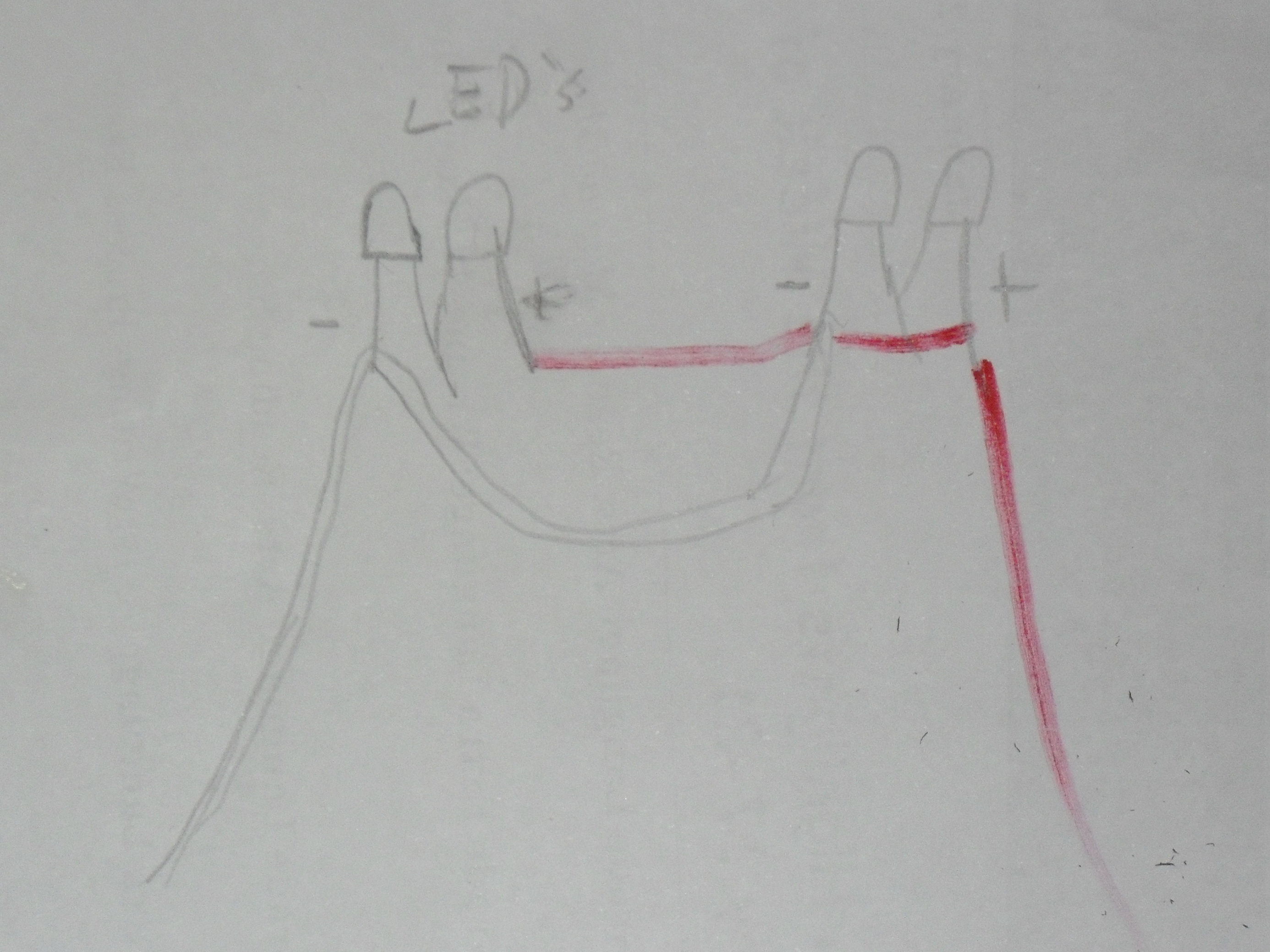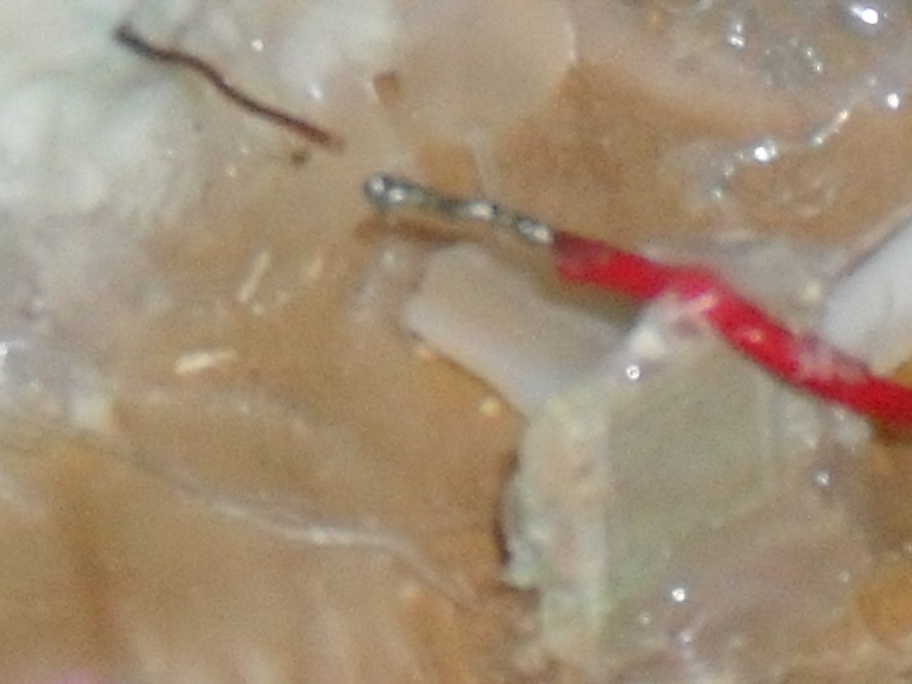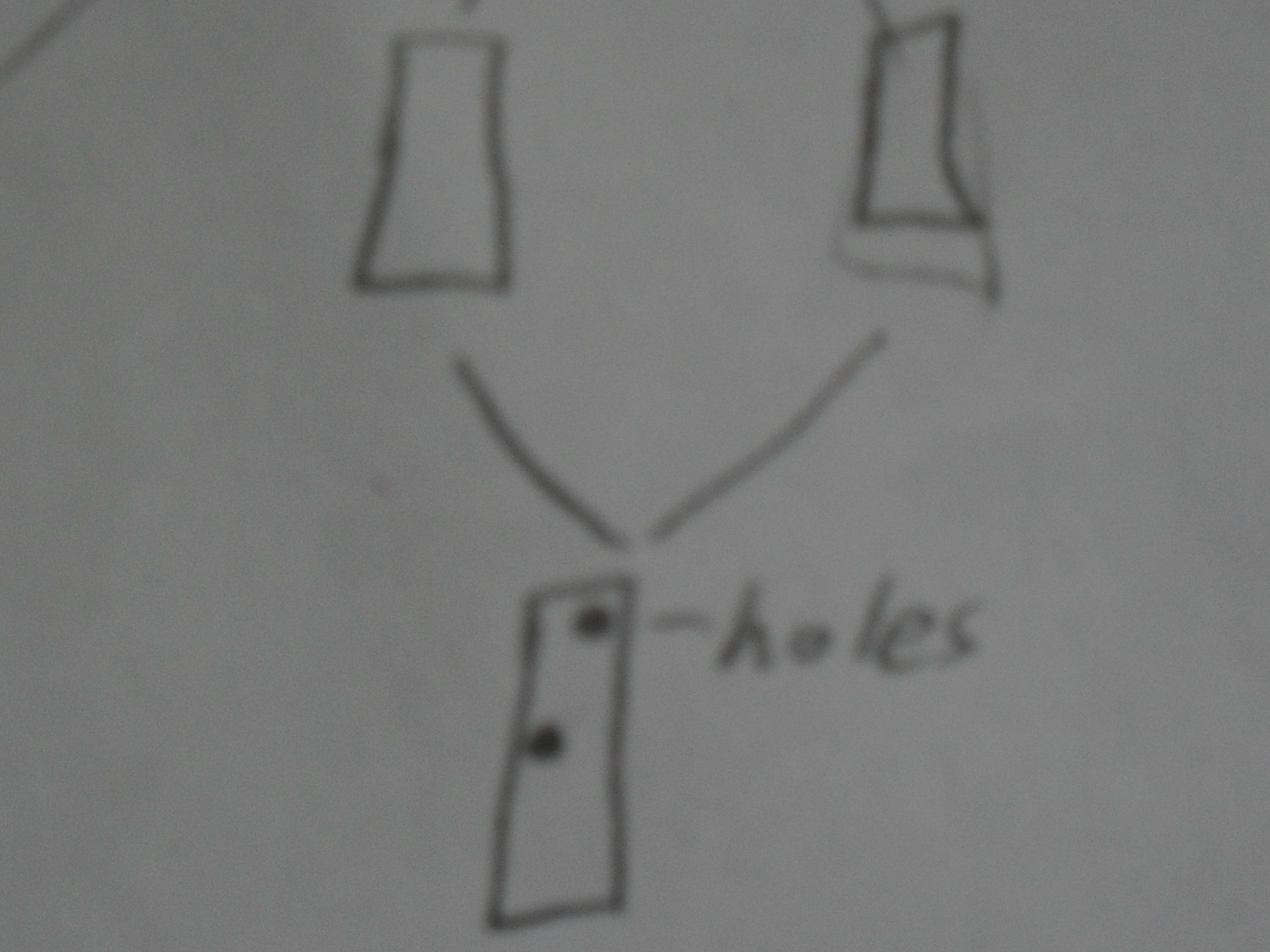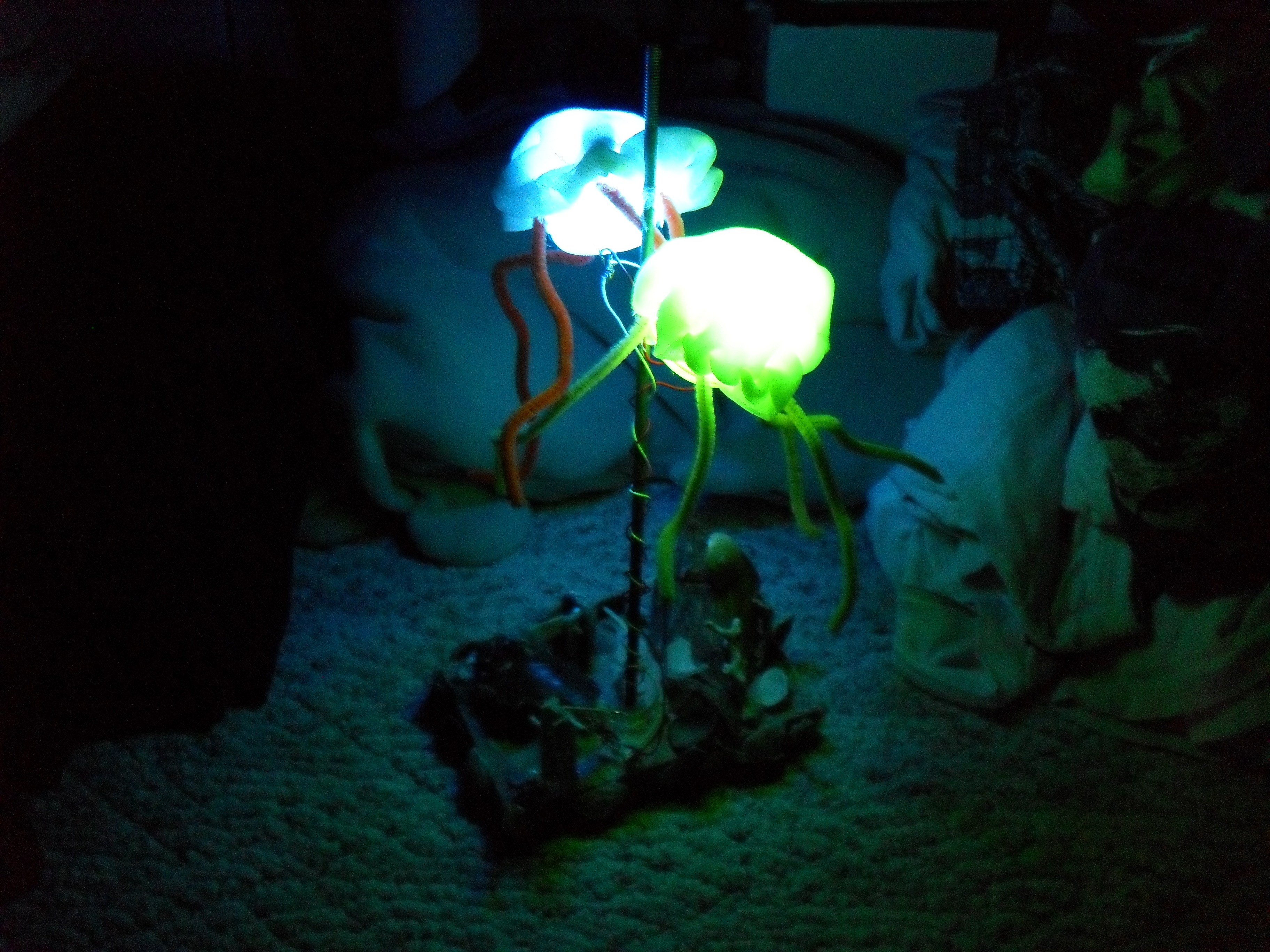Cut off 3″ of uninsulated copper wire and mash it into an “under-over” pattern so it’s about the size of a fingernail.
Cut a slit into the popsicle stick piece with one hole. Also, hot-glue the mashed up copper wire into the slit.
Hot glue gun the popsicle stick pieces to the lamp stand base so that the mashed up copper wire is able to touch the end of the wire piece and the uninsulated copper wire in the casein at the same time.
Connect the uninsulated copper wire pieces in the casein to the correct terminals on the 9V battery.
Flip the make-shift popsicle switch system on (to do that, make the mashed up copper wire pieces touch the end of the 1′ wire and the uninsulated copper wire in the casein).
Decorate your new jellyfish lamp (see LED jellies contributed by Angela Sheehan).





















